Menus

Gargolov

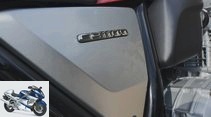
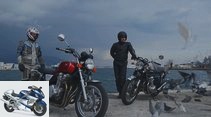

25th photos
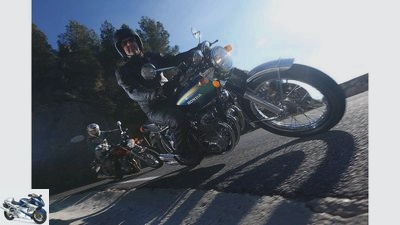
Gargolov
1/25
Honda CB 1100 and CB 750. The tradition of the classic, air-cooled four-cylinder from Japan is continued.

Gargolov
2/25
The oil tank for the dry sump lubrication is hidden behind the side cover. In the background: carburetor and kick starter.
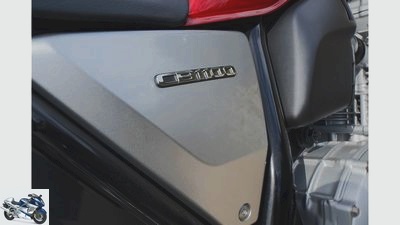
Gargolov
3/25
Flat plastic and factual lettering.
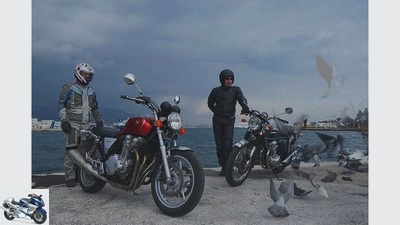
Gargolov
4/25
Foursome, greet me from the sun! Both can do that equally.
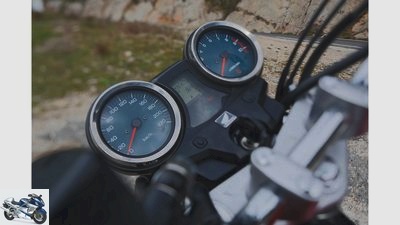
Gargolov
5/25
New: Offers more information, but undoubtedly has less style
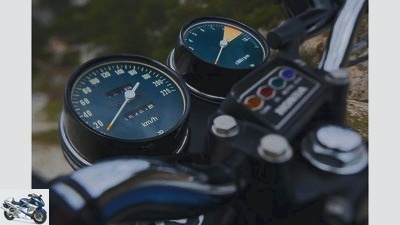
Gargolov
6/25
Old: two instruments, two rows of numbers rolled up, two pointers, four little lights for control. Basta.
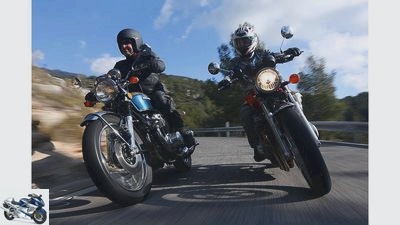
Gargolov
7/25
I am, so I drive. Being is timeless on both.
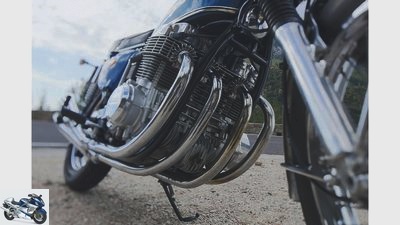
Gargolov
8/25
Strong and almost indestructible: its appearance resembled a UFO and the layout of the air-cooled in-line four-wheeler shaped Japanese motorcycle construction for decades.
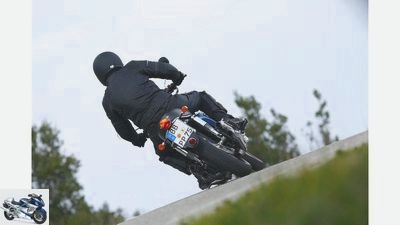
Gargolov
9/25
Exit with Honda CB 750 and Honda CB 1100.

Gargolov
10/25
Exit with Honda CB 750 and Honda CB 1100.
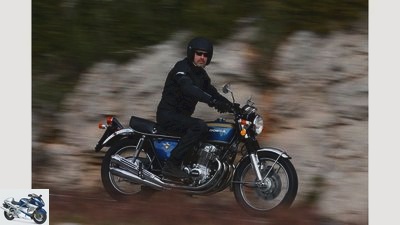
Gargolov
11/25
Exit with Honda CB 750 and Honda CB 1100.
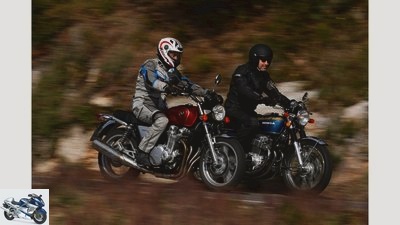
Gargolov
12/25
Exit with Honda CB 750 and Honda CB 1100.
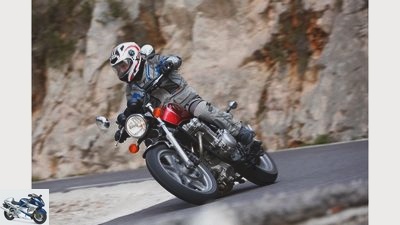
Gargolov
13/25
Exit with Honda CB 750 and Honda CB 1100.
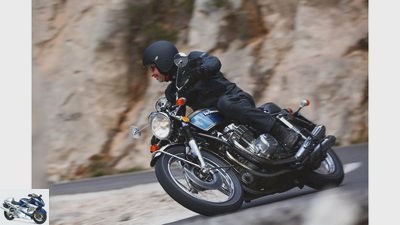
Gargolov
14/25
Exit with Honda CB 750 and Honda CB 1100.
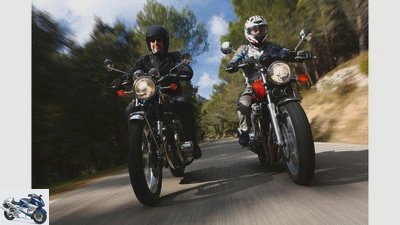
Gargolov
15/25
Exit with Honda CB 750 and Honda CB 1100.

Gargolov
16/25
Exit with Honda CB 750 and Honda CB 1100.
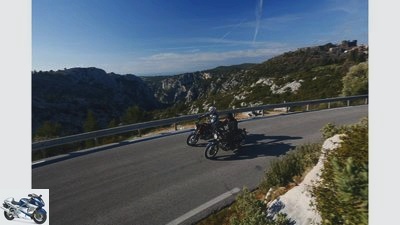
Gargolov
17/25
Exit with Honda CB 750 and Honda CB 1100.
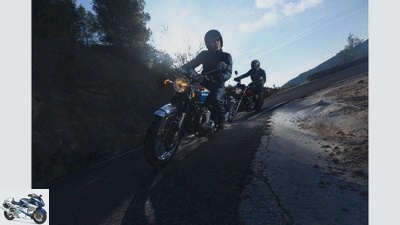
Gargolov
18/25
Exit with Honda CB 750 and Honda CB 1100.
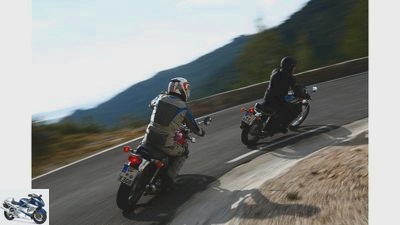
Gargolov
19/25
Exit with Honda CB 750 and Honda CB 1100.
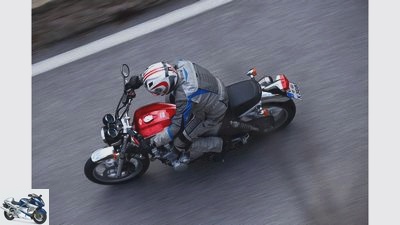
Gargolov
20/25
Exit with Honda CB 750 and Honda CB 1100.

Gargolov
21/25
Exit with Honda CB 750 and Honda CB 1100.

Gargolov
22/25
Exit with Honda CB 750 and Honda CB 1100.
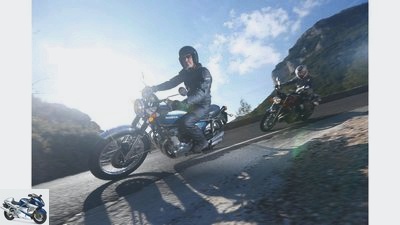
Gargolov
23/25
Exit with Honda CB 750 and Honda CB 1100.

Gargolov
24/25
Exit with Honda CB 750 and Honda CB 1100.
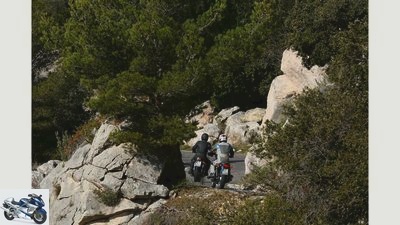
Gargolov
25/25
Exit with Honda CB 750 and Honda CB 1100.
Impression Honda CB 750, Honda CB 1100
The
Big Bang
When the Honda CB 750 was presented at the Tokyo Motor Show in 1968, the modern era of motorcycle construction began. The new CB 1100 continues the tradition of the classic, air-cooled four-cylinder from Japan. 45 years lie between the two machines, traces of earlier genes can still be found?
UTo understand why the Honda CB 750 hit the proverbial bomb, one has to look at the environment into which the world’s first large-scale four-cylinder was born. At the end of the 1960s, the economic miracle had long since reached the little man, and so he preferred to drive to work in his own car rather than on a weather-dependent two-wheeler. The image of motorcyclists was somewhere between “poor dog” and “unfortunate mess”. The manufacturer‘s range of models looked accordingly.
Buy complete article

Impression Honda CB 750, Honda CB 1100
The
Big Bang
Honda CB 1100 with updated technology
Lots of 125 cc dominated the scene, 250 cc with an output of around 25 hp were already considered seasoned motorcycles, and the top league was made up of priceless exotic vehicles such as MV Agusta or Munch. One step below that, the BMW R 75/5 with British twins like a BSA Thunderbolt or Triumph Bonneville and Italian divas such as Moto Guzzi V7 Spezial, Laverda 750 S and Ducati 750 GT competed for rare customers. Around 50 hp was definitely a lot of wood for the Twins of that time. And now the Honda: four cylinders, overhead camshaft, 67 hp, 200 km / h! Plus the first standard disc brake – and at an affordable price. The madness!
The first tests by the enthusiastic specialist press quickly refuted fears that this rocket was undrivable. It also quickly became apparent that the mighty four-cylinder was not only strong, but also raised the bar significantly in terms of reliability. From then on, Honda was virtually overwhelmed by demand and the concept of the transversely installed air-cooled four-cylinder engine shaped the layout of Japanese motorcycles for decades.
Til today. However, a current Fireblade not only looks a little different, technically, apart from the in-line engine principle, it no longer has much to do with the parent mother. But Honda has reconsidered its classic and launched the CB 1100 on the domestic market in 2010. A retro bike with a classic look with updated technology. A joint excursion is almost an obvious choice.
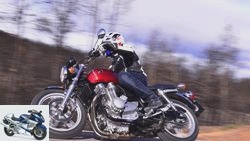
Naked bike
Driving report Honda CB 1100
Traditional optics meet modern technology
read more
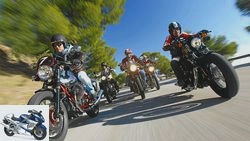
Modern Classic
Comparison test: Harley-Davidson Sportster Forty-Eight, Honda CB 1100, Kawasaki W 800, Moto Guzzi V7 Racer, Triumph Scrambler
The slow must go on
read more
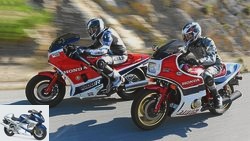
classic
Honda CB 1100 R and Honda VF 1000 R in comparison test
The series offshoot of the long-distance racer
read more
How much is left of the Honda CB 750??
A serious comparison of the two is of course forbidden, because it would give the Honda engineers a bad report if, after a good four decades of progress, the 911 CB did not mercilessly doze the seven and a half on all fronts. At all? Well we’ll see. Rather, the question arises of how much spirit and character is left of the ancients today.
Gargolov
I am, so I drive. Being is timeless on both.
On closer inspection, including the tapping test, the CB 750 reveals itself to be honest skin: what looks like chrome or sheet metal or rubber is chrome or sheet metal or rubber. In the 1100s, a number of small parts are made of plain plastic. After all, the fenders are made of chrome-plated steel.
There are also big differences in the seat test: On the old one, the height difference between the saddle and handlebars is significantly lower than on the new one, which, in conjunction with the footrests that are far forward and below, results in an unusual, albeit not uncomfortable position. On the new one, the handlebars are much higher and pulled back, the pegs are quite high up and back, which leads to rather tight angles in the bones of long-legged people.
Time to get things moving! Unsurprisingly, the 911 always starts at the push of a button and goes into a stable idle state. Depending on the temperature, the seven-five offers a significantly higher level of experience: open the fuel tap, the choke lever up and then, -wiieewiieewiiee, the starter wails, and the four cylinders report to work one after the other, wrapping the scene in a bassy, babbling sound Idle sound carpet as well as an odeur of the burnt mixture. Or the unburned one. Let’s get away.
After a few kilometers, the horse and rider got used to each other and reached operating temperature. The 40-year-old foursome goes to work in a cultivated manner. It hardly vibrates and pulls evenly and powerfully through the rev range. The nominal power is applied at 8000 revolutions. After all, 67 hp, which means a specific output of almost 90 hp / liter. The new four-cylinder looks old with “only” 79 hp / liter despite the double cam head.
Honda CB 1100 consumes only half as much
The current emission limit values are tightening his throat; in the past people hardly cared about exhaust gases and noise. But here and now it’s not about the last bit of top performance, instead we mostly romp around in the range between 3000 and 6000 tours, enjoy the view and listen to the beguiling sound that escapes from the four flutes of the 750s. Basically, the drive is quite contemporary, apart from the immense thirst. Even taking into account the consumption-promoting photo trips, ten liters per 100 kilometers of a good thing is still too much. The new one gets by with around half under the same conditions.
Gargolov
Honda CB 1100 and CB 750. The tradition of the classic, air-cooled four-cylinder from Japan is continued.
In terms of character, the new four-series has not strayed too far from the old one: Cozy grumbling downstairs, of course more powerful in the middle of the engine speed due to the displacement advantage, but quite tough at the top. The big foursome is a great companion for the de-stressed ride. He refuses to think about performance so consistently that it is sealed off at 180 km / h. On the German autobahn, the old could outrun the new. Theoretically.
In the reality of the little provincial road in southern France, switching from old to new almost feels like switching from a forty-tonne truck to a kart. The 1100 is easy and nimble to control, thanks to its narrow tires, it drives around all corners in a nice and neutral way and thanks to the combination brake and ABS it can be operated with one Brake fingers together. And this is where the real progress lies: If you were to choose the braking point of the 911 only once on the five-five, the journey would inevitably end next to the road. So anticipatory driving is indicated if you want to arrive safely.
The oldie chassis itself isn’t that bad. Assuming a proper driving style, the fork and struts manage to keep the worst hardship away from the driver, although today’s standards of response, feedback and damping force are better not to apply. The new one is inconspicuous in the best sense of the word. And at the end of a wonderful day of motorcycling, you begin to suspect what a blast the CB must have been back then. A big bang!




28 photos
Images: Impression Honda CB 750, Honda CB 1100
To home page
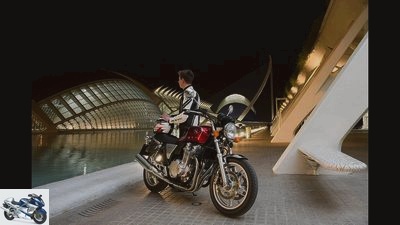
Manufacturer
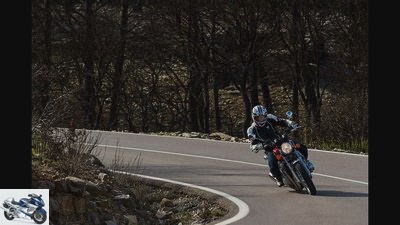
Manufacturer
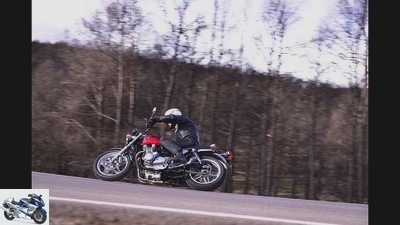
Manufacturer
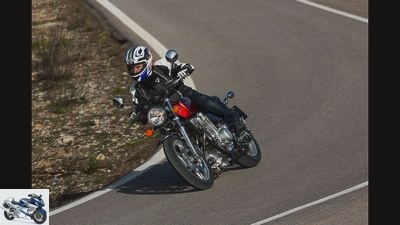
Manufacturer

Manufacturer
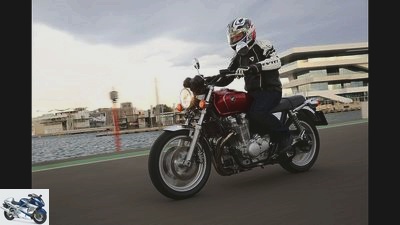
Manufacturer
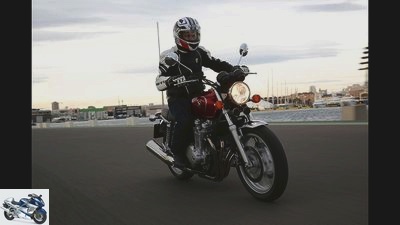
Manufacturer
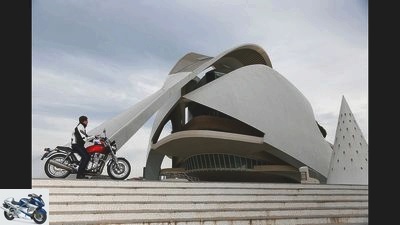
Manufacturer
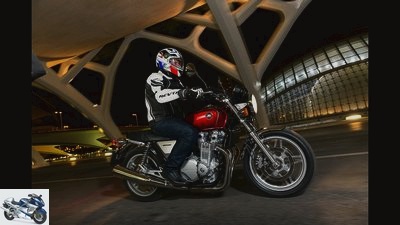
Manufacturer
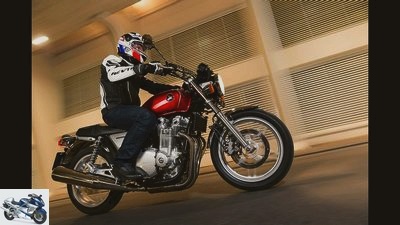
Manufacturer

Manufacturer
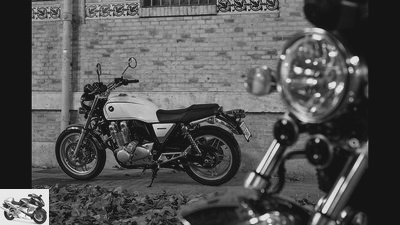
Manufacturer
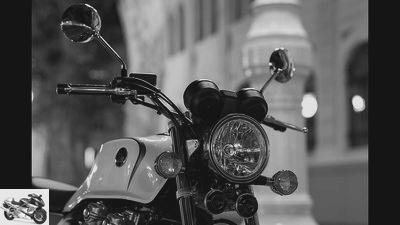
Manufacturer
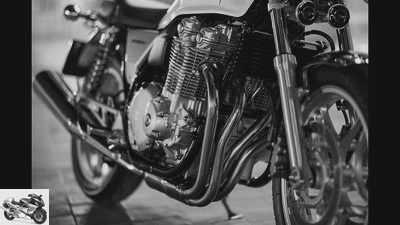
Manufacturer
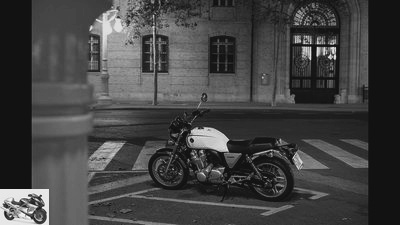
Manufacturer
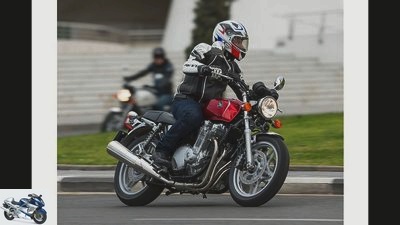
Manufacturer
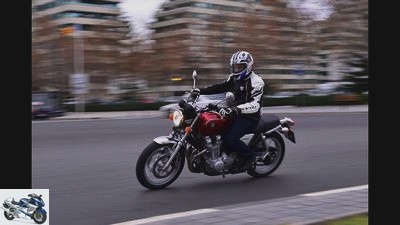
Manufacturer
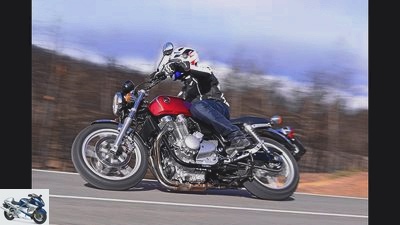
Manufacturer

Manufacturer
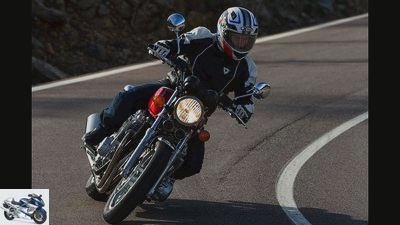
Manufacturer
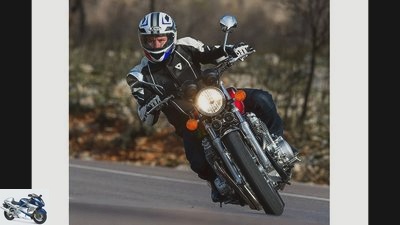
Manufacturer
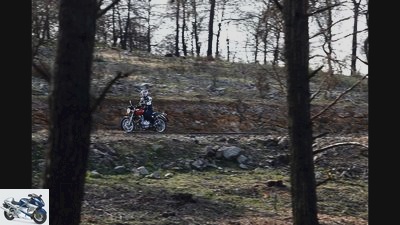
Manufacturer
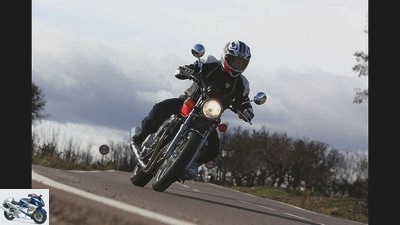
Manufacturer
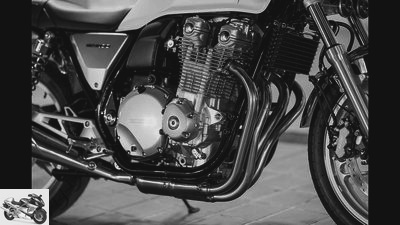
Manufacturer
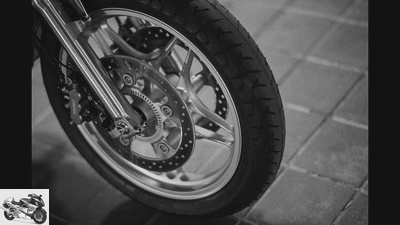
Manufacturer
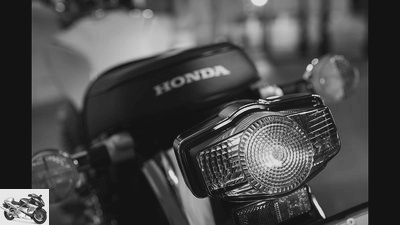
Manufacturer
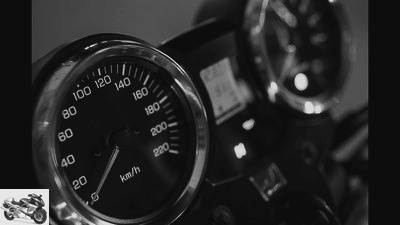
Manufacturer
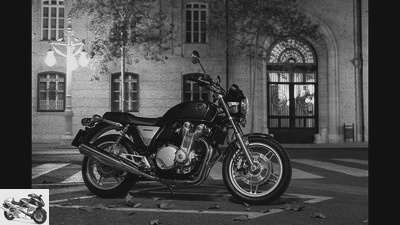
Manufacturer
Technical specifications
Gargolov
Foursome, greet me from the sun! Both can do that equally.
| Honda CB 750 (1972) | Honda CB 1100 | |
| Type of engine | air-cooled four-cylinder four-stroke in-line engine, two valves per cylinder, through an overhead Camshaft and rocker arm operated, E and kick starter |
air-cooled four-cylinder four-stroke in-line engine, four valves per cylinder, through two overhead Camshafts and bucket tappets actuated, Electric starter |
| Mixture preparation | Quadruple carburetor, Ø 28 mm | Injection, Ø 32 mm |
| coupling | Multi-disc oil bath clutch | Multi-disc oil bath clutch |
| transmission | Five-speed | Five-speed |
| Secondary drive | O-ring chain | O-ring chain |
| Bore x stroke | 61.0 x 63.0 mm | 73.5 x 67.2 mm |
| Displacement | 736 cc | 1140 cc |
| compression | 9.0: 1 | 9.5: 1 |
| power | 49 kW (67 PS) at 8000 rpm | 66 kW (90 PS) at 7500 rpm |
| Torque | 60 Nm at 7000 rpm | 93 Nm at 5000 rpm |
| Weight with a full tank | 235 kilograms | 248 kg |
| Top speed | over 200 km / h | 180 km / h |
| price | 6598 marks | 7595 euros |
To understand why the Honda CB 750 hit the proverbial bomb, one has to look at the environment into which the world’s first large-scale four-cylinder was born. At the end of the 1960s, the economic miracle had long since reached the little man, and so he preferred to drive his own car rather than the weather-
dependent two-wheeler to work. The image of motorcyclists was somewhere in between "poor dog" and "unfortunate baffle". The manufacturer’s range of models looked accordingly.
Lots of 125 cc dominated the scene, 250 cc with outputs of around 25 hp were already regarded as seasoned motorcycles, and the top league was made up of priceless exotic vehicles such as MV Agusta or Munch.
One step below was the BMW R 75/5 with British twins like a BSA Thunderbolt or Triumph Bonneville and
Italian divas like Moto Guzzi V7 Spezial, Laverda 750 S and Ducati 750 GT for the rare clientele.
Around 50 hp was definitely a lot of wood for the Twins of that time. And now the Honda: four cylinders, overhead camshaft, 67 hp, 200 km / h! Plus the first standard disc brake – and at an affordable price. The madness!
The first tests by the enthusiastic specialist press quickly refuted fears that this rocket was undrivable. It also quickly emerged that the mighty four-cylinder was not
was only strong, but also raised the bar significantly in terms of reliability. From then on, Honda was virtually overwhelmed by demand and the concept of the transversely installed air-cooled four-cylinder engine shaped the layout for decades
Japanese motorcycles.
Til today. However, a current Fireblade not only looks a little different, technically, apart from the in-line engine principle, it no longer has much to do with the parent mother. But Honda has reconsidered its classic and launched the CB 1100 on the domestic market in 2010. A retro bike with a classic look with updated technology. A joint excursion is almost an obvious choice.
A serious comparison of the two is of course forbidden, because it would give the Honda engineers a bad report if, after a good four decades of progress, the 911 CB did not mercilessly doze the seven and a half on all fronts. At all? Well we’ll see. Rather, the question arises of how much spirit and character is left of the ancients today.
On closer inspection, including the tapping test, the CB 750 reveals itself to be honest skin: what looks like chrome or sheet metal or rubber is chrome or sheet metal or rubber. In the 1100s, a number of small parts are made of plain plastic. After all, the fenders are made of chrome-plated steel.
There are also big differences in the seat test: On the old one, the height difference between the saddle and handlebars is significantly lower than on the new one, which, in conjunction with the footrests that are far forward and below, results in an unusual, albeit not uncomfortable position. On the new one, the handlebars are much higher and pulled back, the pegs are quite high up and back, which leads to rather tight angles in the bones of long-legged people.
Time to get things moving! Unsurprisingly, the 911 always starts at the push of a button and goes into a stable idle state. Depending on the temperature, the seven-fiver offers a significantly higher level of experience: the fuel tap open, the choke lever up and then, howiieewiiee, the starter wails, and sparkling and
The four cylinders report to work one after the other and wrap the scene in a bassy, babbling idle soundscape as well as in an odor of the burnt
Mixture. Or the unburned one. Let’s get away.
After a few kilometers, the horse and rider got used to each other and reached operating temperature. The 40-year-old foursome goes to work in a cultivated manner. It hardly vibrates and pulls evenly and powerfully through the rev range. The nominal power is applied at 8000 revolutions. After all, 67 hp, which means a specific output of almost 90 hp / liter. Then the new four sees-
cylinder with "just" 79 HP / liter looks old despite the double cam head.
The current emission limits are tightening his throat,
In the past, people hardly cared about exhaust fumes and noise.
But here and now it’s not about the last bit of top performance, instead we mostly romp around in the range between 3000 and 6000 tours, enjoy the view and
listen to the beguiling sound of the four flutes of the 750s
escapes. Basically, the drive is quite contemporary,
apart from the immense thirst. Even taking into account the consumption-boosting photo trips, ten liters per 100
Kilometers of good then too much. The new one gets by with around half under the same conditions.
In terms of character, the new four-series has not strayed too far from the old one: Cozy grumbling downstairs, of course more powerful in the middle of the engine speed due to the displacement advantage, but quite tough at the top. The big foursome is a great companion for the de-stressed ride. He refuses to think about performance so consistently that it is sealed off at 180 km / h. On the German autobahn, the old could outrun the new. Theoretically.
In the reality of the little provincial road in southern France, switching from old to new almost feels like switching from a forty-tonne truck to a kart. The 1100 is easy and nimble to control, thanks to its narrow tires, it drives around all corners in a nice and neutral way and thanks to the combination brake and ABS it can be operated with one Brake fingers together. And this is where the real progress lies: If you were to choose the braking point of the 911 only once on the five-five, the journey would inevitably end next to the road. So anticipatory driving is indicated if you want to arrive safely. The oldie chassis itself isn’t that bad. Assuming a proper driving style, the fork and struts manage to keep the worst hardship away from the driver, although today’s standards of response, feedback and damping force are better not to apply. The new one is inconspicuous in the best sense of the word. And at the end of a wonderful day of motorcycling, you begin to suspect what a blast the CB must have been back then. A big bang!
www.motorradonline.de/honda
Related articles
-
Driving report: the retro bike Honda CB 1100
Yamada 12 pictures Yamada 1/12 The flap in the exhaust of the Honda CB 1100 is also state-of-the-art. Yamada 2/12 Classic and yet …
-
Comparison test Honda VT 750 C2-Kawasaki VN 800 Classic
Comparison test Honda VT 750 C2 / Kawasaki VN 800 Classic Endstation Sehnsucht Or how you can get your kicks in Stuttgart-Bad Cannstatt …
-
Comparison test between the Honda VF 750 C and the Triumph 900 Adventurer
Comparison test, Honda VF 750 C, Triumph Adventurer 900 Honda VF 750 C against Triumph 900 Adventurer For space gliders there are English and Japanese …
-
Driving report: Honda CB 1100, Triumph Bonneville SE
Gargolov Driving report: two enthusiast models Honda CB 1100, Triumph Bonneville SE Fans of top speed, horsepower hype or maximum lean angle can now turn…
-
Test, Honda F6C Honda F 6 C Forget everything you’ve ever heard about cruisers. E. There’s no end to it: small cruisers, big cruisers, good cruisers, bad…
-
On the move with Honda CB 1100 F and Kawasaki GPZ 1100 B2
www.factstudio.de 29 pictures factstudio.de 1/29 picture gallery: Honda CB 1100 F and Kawasaki GPZ 1100 B2 on the move. factstudio.de 2/29 Honda CB 1100 F and …
-
Top test Moto Guzzi Breva V 1100
Jahn Top-Test Moto Guzzi Breva V 1100 Brave Breva With the Breva V 1100 a new era begins for Moto Guzzi. And for BMW grows for the first time …
-
Comparison test BMW K 1200 RS against Honda CBR 1100 XX
Comparison test BMW K 1200 RS against Honda CBR 1100 XX Crown jewels K 1200 RS and CBR 1100 XX are the image carriers of BMW and Honda. But you don’t want …
-
Bilski Top-Test Honda Hornet 600 due date Attention! Honda has another perky, angry hornet on offer: the new Hornet 600. It’s stronger …
-
Honda Crossrunner and Crosstourer DCT in the test
Bilski family duel: Honda Crossrunner and Crosstourer DCT Honda Crossrunner or Crosstourer DCT? Crusaders are commonly found on the seas of this …